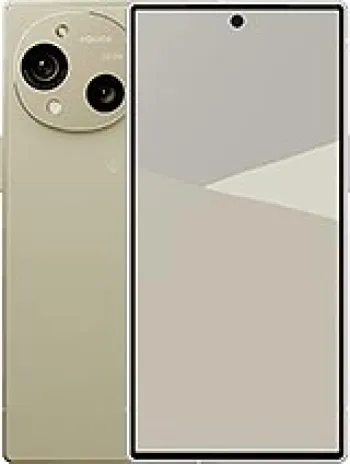
Overview of the Sharp GX10i
The Sharp GX10i is a feature phone that marked an era of mobile technology in the early 2000s. Although it might seem rudimentary by today's standards, it was state-of-the-art at the time of its release in May 2003. Designed to meet the needs of users that required basic mobile phone functionalities with a tad of multimedia capabilities, the GX10i stands as a remarkable representation of its class.
Design and Build
With dimensions of 94 x 49 x 27 mm and weighing 110 grams, the GX10i was compact and relatively lightweight for its time. Its design features a clamshell form factor, common among phones from that era. Build quality was robust enough to withstand daily use, and it utilized a Mini-SIM card slot to keep up with the telecom trends of the time.
Display
The phone sported a TFT display capable of rendering 65,000 colors, which was quite an achievement for feature phones back then. The screen resolution of 120 x 160 pixels offered sufficient clarity for reading messages and viewing basic graphics. Despite its limited size, the screen did an excellent job of bringing essential phone functionalities to the user’s fingertips.
Camera Capabilities
A highlight of the GX10i was its camera feature. It came equipped with a 0.1 MP CIF camera, allowing users to take photos—a novelty at the time. However, the camera's capabilities were basic, with no video capture option available. The quality was suitable for simple picture-taking but lacked the refinement found in modern devices.
Connectivity Features
Connectivity was limited by today's standards but adequate at the time, with technology supported by GSM 900/1800/1900 bands. The phone lacked advanced connectivity options like Bluetooth and WLAN but included an infrared port for transferring data between compatible devices.
Messaging and Internet
The GX10i supported SMS and MMS messaging, allowing users to send pictures and multimedia content. Moreover, it featured a WAP 1.2.1 browser, enabling basic internet functionalities although limited compared to modern smartphones. This enabled users to browse text-heavy websites and stay connected in ways previously unprecedented for mobile phone users.
Entertainment and Games
For entertainment, the Sharp GX10i offered three pre-installed Java games: PK Game, Collection Hunter, and Ice Hockey. These games provided casual fun and made use of the phone's Java capabilities to run applications, paving the way for the mobile gaming revolution that followed in later years.
Sound and Alerts
Sound functions included polyphonic ringtones with composer capabilities, allowing users to customize their alert tones. However, it lacked a loudspeaker and 3.5mm jack, limiting audio sharing and external listening options.
Battery and Power
The phone used a removable Li-Ion 720 mAh battery. This allowed for approximately 3 hours and 30 minutes of talk time and up to 250 hours of standby time, representing decent battery life for its class. The removable nature of the battery was beneficial for replacing it easily when wear and tear reduced its effectiveness.
Memory and Storage
The GX10i did not include an expandable memory slot, which meant that users were limited to the internal storage capacities allocated for phonebook entries and text messages. It had the facility to store 200 contacts with multiple fields and maintain call records of the last 10 dialed, received, and missed calls.
Conclusion
In summary, the Sharp GX10i was an innovative product for its time, blending basic mobile communication functions with emergent multimedia capabilities. While it is now considered obsolete, its contribution to the mobile industry remains significant as it laid down important groundwork for the features we take for granted today in smartphones. The GX10i was a pioneer in a time when technology began gearing towards the multimedia-rich experiences contemporary users have come to expect.
Key Features of Sharp GX10i
- GSM Technology with 2G bands (GSM 900 / 1800 / 1900)
- Compact dimensions: 94 x 49 x 27 mm
- Lightweight: 110 g
- TFT display with 65K colors and a resolution of 120 x 160 pixels
- Infrared port for connectivity
- Supports SMS and MMS messaging
- WAP 1.2.1 browser for basic web access
- Java support for applications and games
- Removable Li-Ion 720 mAh battery
- Battery stand-by time up to 250 hours and talk time up to 3 hours and 30 minutes
- Equipped with 3 games including PK Game, Collection Hunter, and Ice Hockey
Sharp GX10i - Key Disadvantages
- Lacks EDGE support, limiting faster internet speeds.
- No support for external memory card (No card slot).
- Main camera is CIF with no video capability.
- Missing a selfie camera.
- No loudspeaker and missing 3.5mm audio jack.
- Does not support Bluetooth connectivity.
- No WLAN (Wi-Fi) support.
- Positional services like GPS are not available.
- No built-in FM Radio.
- The USB connectivity option is unspecified.

View Also
More Phones
All Rights Reserved +14045 Phones © Mobilawy 2025

























